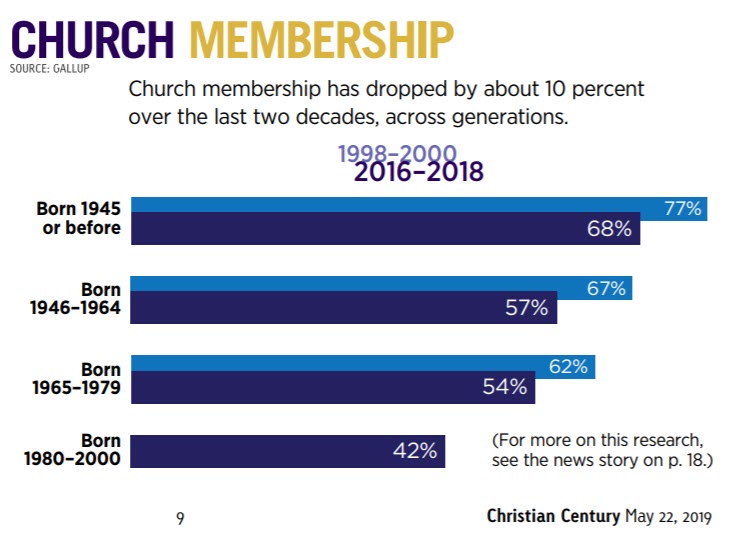Gallup recently reported that church membership in the United States has experienced a significant decline over the last two decades dropping from 70% in 1999 to 50% in 2018. This shift is attributed to both an overall decline in religious affiliation and a decline in membership among those who identify with a specific religion.
So What?
The May 22, 2019 edition of the Christian Century included the following visual that clearly communicates the Gallup data illustrating that the decline has occurred across all age groups.

When by age cohort the declines look strikingly similar with drops of 8-10 points. A more helpful way of comparing across generations is to consider percent change:
- Traditionalists (b. before 1945) -11.8%
- Boomers (b. 1946-1964) -14.9%
- Gen Xers (b.1965-1979) -12.9%
Fewer and fewer people are choosing church membership. And, those who are choosing (or continuing to choose) church membership are attending less and less frequently.
Looking Forward
- Over the next 20 years what do you think is most likely to happen with church membership in the United States (continued decline at a similar rate to the last 20 years, more dramatic decline, stability, some growth, or significant growth)?
- What factors contributed most significantly to your answer above?
- Based on the changes you anticipate over the next 20 years, what changes should your congregation consider?
Note: The statistics provided in the Christian Century graphic and analyzed following it compare averages for 1998-2000 with averages for 2016-2018.